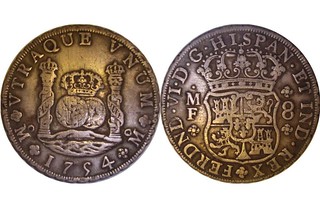
PREV ARTICLE
NEXT ARTICLE
FULL ISSUE
PREV FULL ISSUE
THE DOLLAR IN REVOLUTIONARY AMERICAChip Howell forwarded this article from the
Journal of the American Revolution. Thanks. -Editor
There is a major point that must be understood in any discussion of Revolutionary War era economics. All parts of the United States today are connected within a single economy. Prior to the completion of independence in the 1800s, however, America consisted of hundreds of individual economies ranging from small villages to large groups of merchants—the latter with close connections to the economies of Europe. Being quite limited in scope, most of these systems operated independently of each other and experienced minimal, if any, influence from the outside world. Each set values and prices had a basis in the local conditions. The coming of war forced the nascent United States to attempt to develop our first true national economy. In the eighteenth-century western world, the economies of all countries relied to some extent on silver and gold coins (called “specie” or “hard money”) minted by each country. England and the British colonies based their system on pounds, shillings, and pence—one pound (1£) consisted of twenty shillings (20s) and each shilling had twelve pence (12d). A common form of expressing amounts in this system displayed £.s.d and this format will be used in this article. To our modern decimal-oriented monetary mind this may look to be a complicated system but it does have a distinct advantage. Comprised of 240 pence, a pound can be evenly divided by several numbers—2, 3, 4, 5, 6, 8, 10, 12, 15, 16 and so on. Try dividing a dollar of one-hundred cents by 3, 6, 8, 12, 15, 16, etc.—it cannot be done without some fraction left over. In a society without calculators conveniently at hand, having money that could be quickly and evenly divided in many different ways made life a bit simpler. To read the complete article, see: Wayne Homren, Editor The Numismatic Bibliomania Society is a non-profit organization promoting numismatic literature. See our web site at coinbooks.org. To submit items for publication in The E-Sylum, write to the Editor at this address: whomren@gmail.com To subscribe go to: https://my.binhost.com/lists/listinfo/esylum All Rights Reserved. NBS Home Page Contact the NBS webmaster 
|
